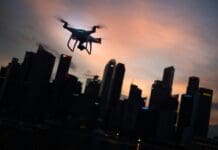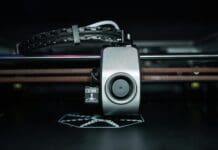
This post is also available in:
 עברית (Hebrew)
עברית (Hebrew)
U.S Navy unmanned aerial vehicle (UAV) experts are interested in UAV’s ability to deliver cargo to and from ships at sea. As a result, Navy Officials will sponsor an experiment this coming March, inviting industry to participate, in order to assess cargo UAV technologies.
Navy leaders want the ability to deliver cargo autonomously with UAVs between shore-to-ship, ship-to-ship, and ship-to-shore. The March experiment will demonstrate the ability to transport a 50-pound payload with a UAV. This according to militaryaerospace.com.
The UAV will launch from a fixed shore base, navigate through two waypoints to a towed barge in open water making bare steerageway at 3-5 knots located at least 25 nautical miles away. The UAV must loiter for 10 minutes, then autonomously land aboard the barge.
After that, the UAV will launch from the barge with the same 50-pound payload and return to the initial shore-based launch site, without refueling or recharging on the barge. Back on shore, participants must demonstrate refueling or recharging.
En-route, the UAV may have GPS navigation, but Navy researchers prefer navigation that does not rely on GPS satellite navigation, and that has a low probability of intercept. No cargo UAVs will be allowed that are longer than 13 feet.
The UAV must fly at speeds of at least 40 knots at altitudes no higher than 2,000 feet. It must launch and recover with a catapult, arresting net, cable, or other mechanical equipment. The UAV must have a transponder with at least Mode-3/C capability. Successful participants may be awarded procurement contracts for more experiments.

























